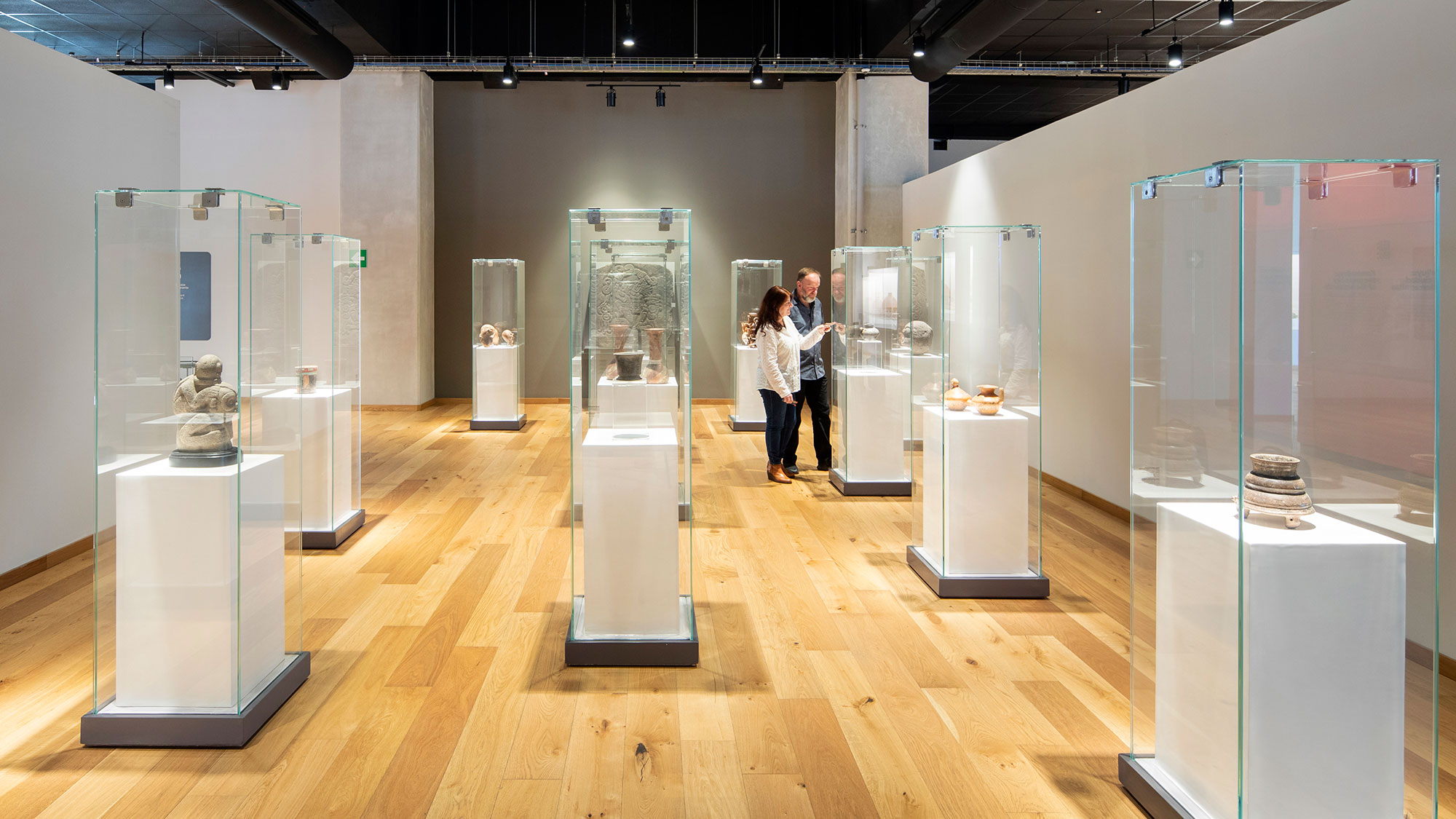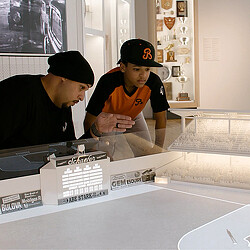Energy Meets Art: How Museums Are Rethinking Climate Control
Energy-saving regulations and new techniques are prompting museums to reexamine how they manage indoor climate control.

For more than 50 years, conservators around the world have sought to prevent damage to the varied objects in their collections by observing a uniform climate-control mantra: keep everything in the museum at approximately 70 degrees Fahrenheit and 50% relative humidity.
But today, that model is shifting as climate risk, energy costs associated with mechanical HVAC systems, and new humidity-controlled display cases are causing museum experts to rethink traditional models of design. Cutting-edge instrumentation and new scientific techniques are helping experts better understand how to protect historical material objects, putting conservators at the forefront of sustainable and flexible climate control strategies.
A substantial body of research indicates that a single standard of narrow temperature and relative humidity control need not be applied to all collections and materials. Certain types of materials require specific climate ranges that are distinctly at odds with the single standard. Many materials are more resilient to relative humidity fluctuations than previously assumed.
Today’s collections may include everything from paper and film to digital records, each requiring different conditions — like cold storage or specialized lab spaces. These collections are incredibly varied, made from different materials, created using different techniques, and shaped by unique histories.

How does this affect museum design?
As museums rethink how they manage indoor climate, designers must also reconsider how collection spaces are designed. Instead of relying on one-size-fits-all climate control, museums are exploring new ways to protect artifacts — methods that are more flexible, energy-efficient, and tailored to each building’s capabilities. By analyzing how well a building handles temperature and moisture, teams can explore sustainable design options for environmental control that still keep collections safe.
Museums now use more intelligent, customized climate guidelines that match the specific needs of their buildings and collections. To preserve artifacts sustainably, they must consider things like local climate, how well the building envelope keeps heat and moisture out, how the air systems work, and any unique storage requirements.
Tailoring Environmental Controls to Local Conditions
A museum located in a tropical, humid climate like Costa Rica will need different climate controls than one in a dry desert like Phoenix or a cold mountain city like Denver. Climate zone studies measure outdoor dew point fluctuations and the level of moisture that mechanical systems must manage to protect artifacts from cracking, warping, or mold deterioration.
Innovative building approaches must reflect the climate where the museum is located, and unique requirements for storing individual objects or groups of objects. Blanket conditions may not be needed for artifacts held in the museum’s collection. Loaned objects may have other requirements and restrictions.
When designing and constructing new buildings or renovating old ones, architects, engineers, conservators, and clients need to work together to significantly reduce the building’s embodied and operational carbon footprint. Additionally, museums must engage with an integrated architectural and engineering design team — including the conservator and/or curatorial team — when making key decisions about environmental conditions that affect display cases.
Exterior design choices, including the lifecycle of the building envelope and the cost and distance of sourcing and shipping products, can further impact the building’s interior temperature and energy costs.

Protecting Collections While Maximizing Efficiency
Environmental factors that can affect museums include air pollution, temperature and humidity changes, light exposure, mechanical stresses such as vibration and handling, vandalism, and nondeliberate forms of human intervention.
Cultural institutions must balance temperature and humidity controls during seasonal weather conditions with guest comfort and preservation of collections.
Instead of using the same 70/50 uniform conditioned climate settings throughout exhibit spaces, some museums are turning to display cases and natural sustainable controls to help control humidity and temperature and protect artifacts.

Here are some key considerations to protect collections while maximizing efficiency:
- Consider lower-energy, passive methods of technology. Passive desiccants or materials that absorb moisture without requiring external energy, like silica gel, are a cost-effective and efficient way to create controlled microclimates within artifact cases, helping to protect valuable objects from the damaging effects of humidity fluctuations.
- Explore natural and sustainable controls, such as high thermal mass and insulation, low air exchange, and microclimate display cases for local control.
- Use glazed and backed paintings to maximize the moisture-buffering effect of the building and its materials.
By understanding local climate conditions, collection vulnerabilities, building envelope limits, and the latest in material science research, museums can practice preventative conservation measures in the earliest stages of project visioning. This approach allows museums to be more flexible and energy-efficient while still safeguarding their collections.
For media inquiries, email .




